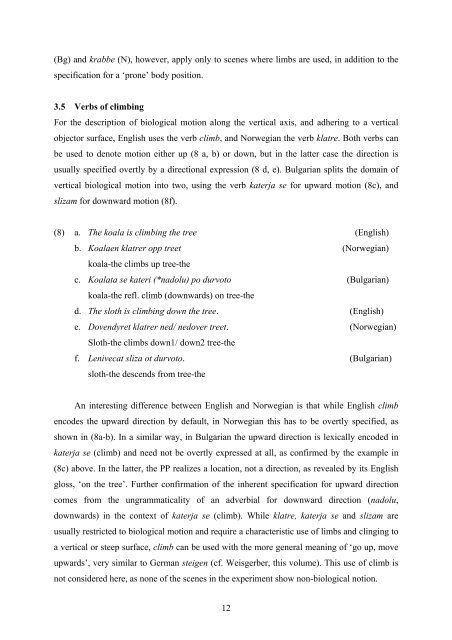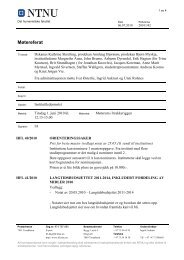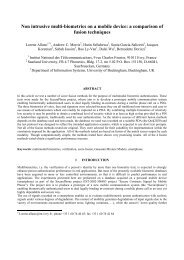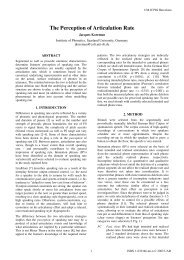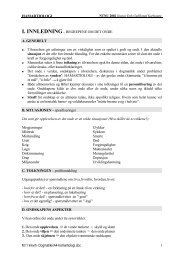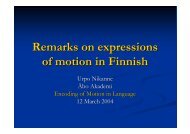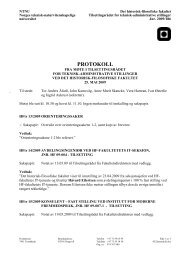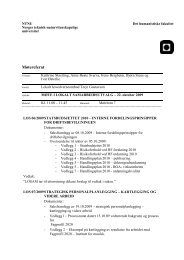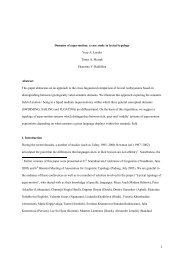In press: In: Dimitrova-Vulchanova, M - NTNU
In press: In: Dimitrova-Vulchanova, M - NTNU
In press: In: Dimitrova-Vulchanova, M - NTNU
Create successful ePaper yourself
Turn your PDF publications into a flip-book with our unique Google optimized e-Paper software.
(Bg) and krabbe (N), however, apply only to scenes where limbs are used, in addition to the<br />
specification for a ‘prone’ body position.<br />
3.5 Verbs of climbing<br />
For the description of biological motion along the vertical axis, and adhering to a vertical<br />
objector surface, English uses the verb climb, and Norwegian the verb klatre. Both verbs can<br />
be used to denote motion either up (8 a, b) or down, but in the latter case the direction is<br />
usually specified overtly by a directional ex<strong>press</strong>ion (8 d, e). Bulgarian splits the domain of<br />
vertical biological motion into two, using the verb katerja se for upward motion (8c), and<br />
slizam for downward motion (8f).<br />
(8) a. The koala is climbing the tree (English)<br />
b. Koalaen klatrer opp treet (Norwegian)<br />
koala-the climbs up tree-the<br />
c. Koalata se kateri (*nadolu) po durvoto (Bulgarian)<br />
koala-the refl. climb (downwards) on tree-the<br />
d. The sloth is climbing down the tree. (English)<br />
e. Dovendyret klatrer ned/ nedover treet. (Norwegian)<br />
Sloth-the climbs down1/ down2 tree-the<br />
f. Lenivecat sliza ot durvoto. (Bulgarian)<br />
sloth-the descends from tree-the<br />
An interesting difference between English and Norwegian is that while English climb<br />
encodes the upward direction by default, in Norwegian this has to be overtly specified, as<br />
shown in (8a-b). <strong>In</strong> a similar way, in Bulgarian the upward direction is lexically encoded in<br />
katerja se (climb) and need not be overtly ex<strong>press</strong>ed at all, as confirmed by the example in<br />
(8c) above. <strong>In</strong> the latter, the PP realizes a location, not a direction, as revealed by its English<br />
gloss, ‘on the tree’. Further confirmation of the inherent specification for upward direction<br />
comes from the ungrammaticality of an adverbial for downward direction (nadolu,<br />
downwards) in the context of katerja se (climb). While klatre, katerja se and slizam are<br />
usually restricted to biological motion and require a characteristic use of limbs and clinging to<br />
a vertical or steep surface, climb can be used with the more general meaning of ‘go up, move<br />
upwards’, very similar to German steigen (cf. Weisgerber, this volume). This use of climb is<br />
not considered here, as none of the scenes in the experiment show non-biological notion.<br />
12


